Tone Curve in Astronomical Image
Celestial Objects are sometimes very bright and faint. We call this a wide dynamic range. Typical CCDs have 16 bit digitization, which means that each pixel has a value between 0 and 65535. This range seems to be a large scale from the view point of our ordinary scene, but that is not large enough scale to describe celestial images. One of the most famous and popular nebulae is Grate Orion nebula. The center of that has four stars so-called Trapezium, and anyone can see that with any telescope because of their high brightness. On the other hand, it is not easy to see faint parts with a small telescope.
We can take an image of Great Orion nebula with CCD cameras, but it is difficult to show its detail with normal process. Let's see a picture of that with normal process.
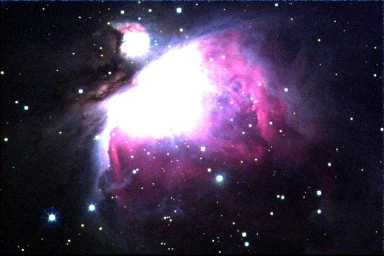
This image is created with just tricolor way. I don't change any tone curve, which means that this image intensity is a linear brightness scale. Many people may agree with that this image is very different from photograph or our image.
The intensity of this nebula distributes in wide rage, between 0 to 65535. However, PC's monitor can display only some value between 0 to 255. To compress nebula's large scale into the monitor scale, we have to do something. I prefer to use "arctangent transfer" process. See the diagram.
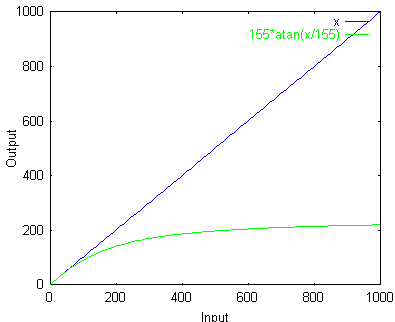
The blue line is linear scale, and the green curve is an arctangent function. Arctangent transferred data are compressed under 255 value. Let's see the arctangent transferred image of Great Orion nebula.
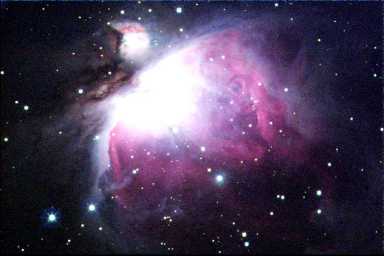
The arctangent transfer is very useful for most nebulae. ( See examples ) We see more detail of the nebula, but it is not good enough to show a whole image in this case. We can't see the center due to its high brightness. Then I used Logarithm transferred process in this case. The Log is more compressed than arctangent one. Let's see the Log transferred image.
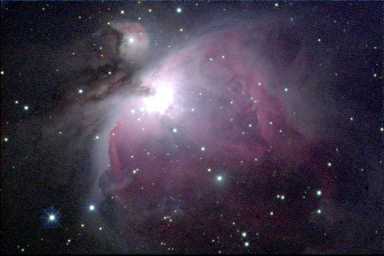
We see more wide area than the arctangent one, but the color is being lost. Therefore, we can think that somewhere between Log and arctangent one may be good one. I combined these two processes and created an image.
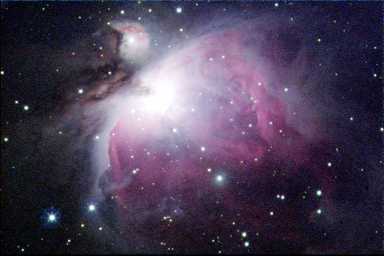
This seems to be very natural, so I prefer to use the arctangent and Log transferred process in this case.
An edge in image is a large difference of intensities in a small region. Log or arctangent transfer compress this difference, so the edge may be lost. See the Log transferred image. It seems very soft because the difference of intensities are compressed. To avoid this compression, some people use unsharp masking process. It can keep the difference of intensities and shows us a whole dynamic range.
11,30,2000
Astronomy
TOP
mail





